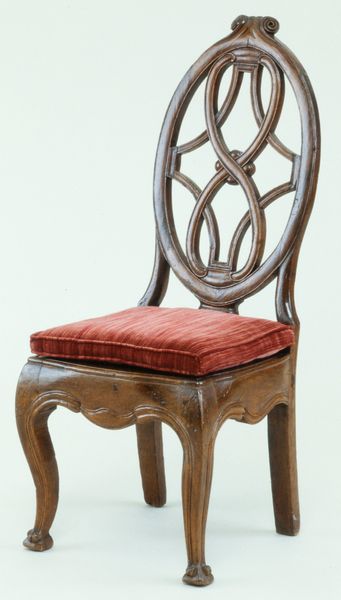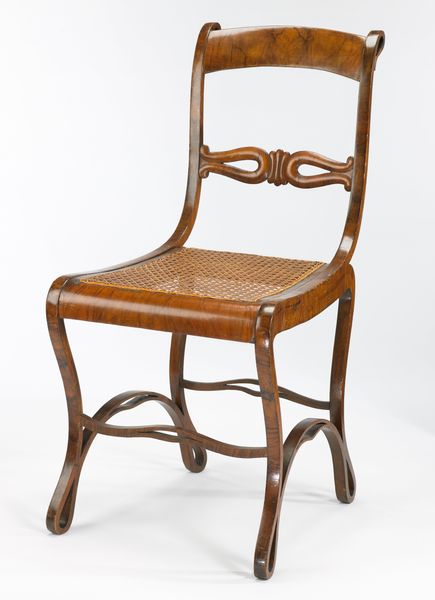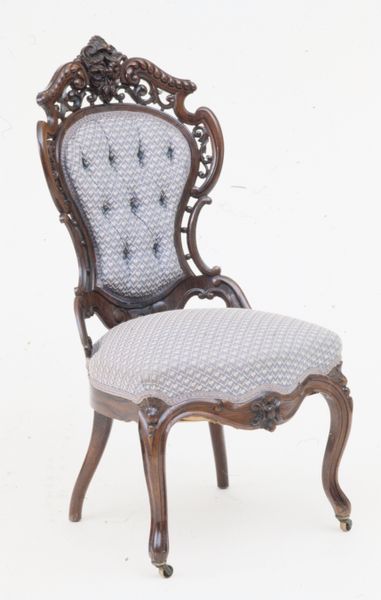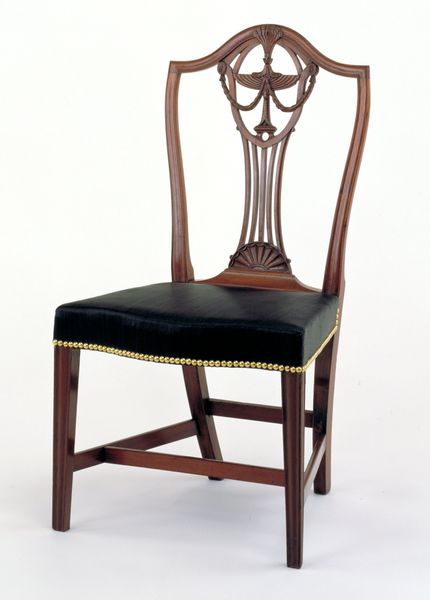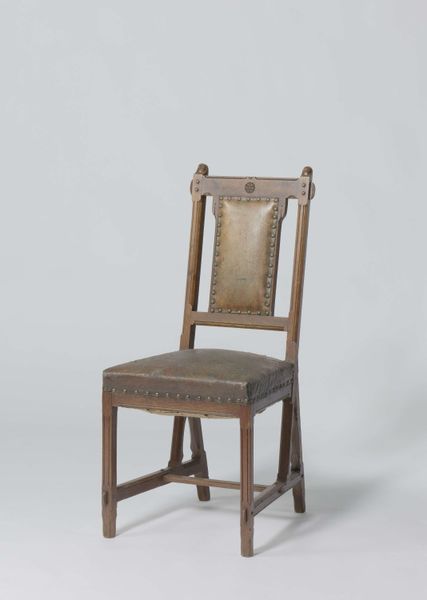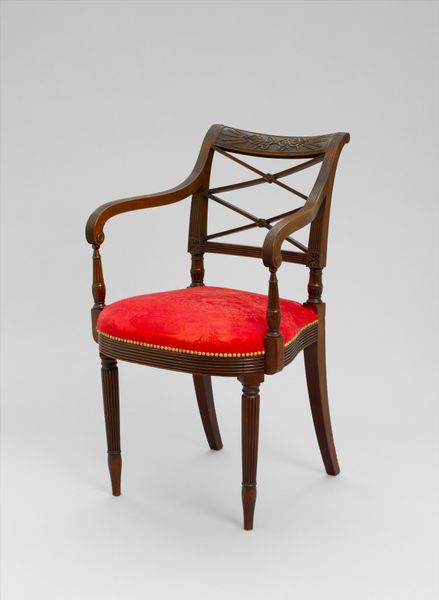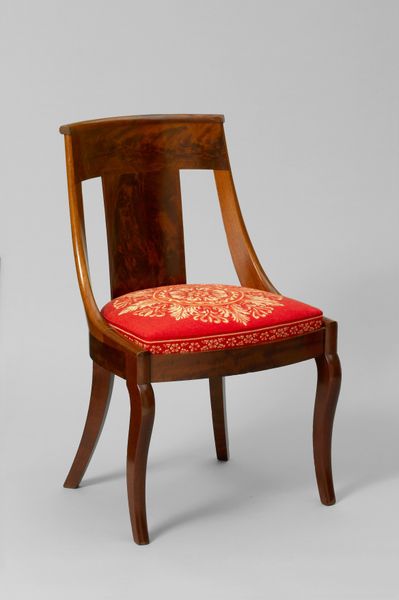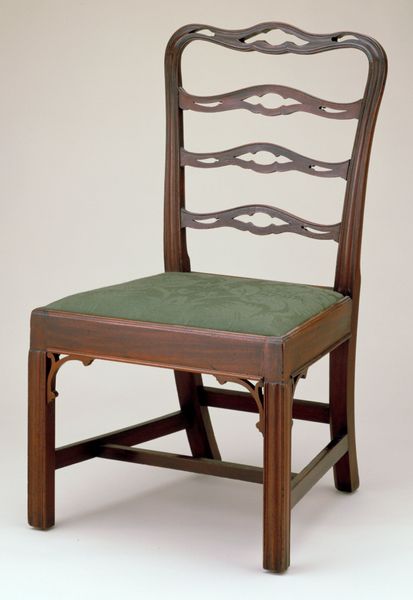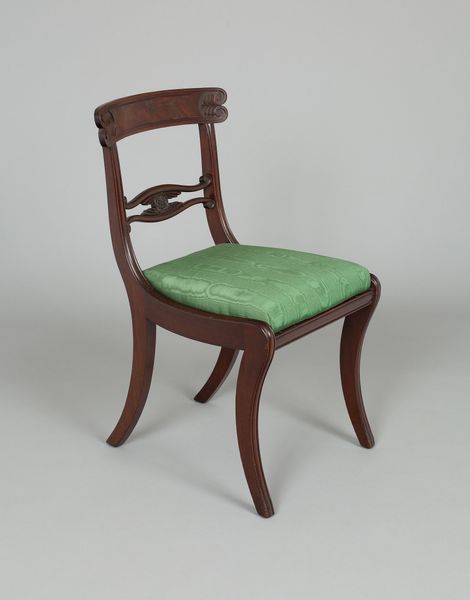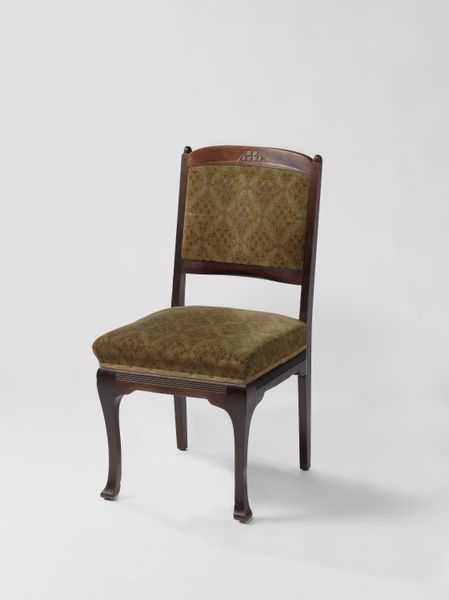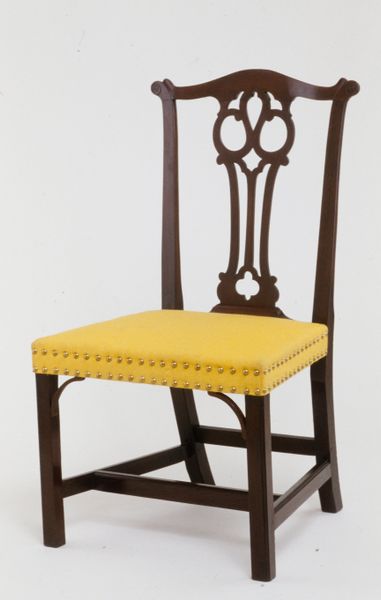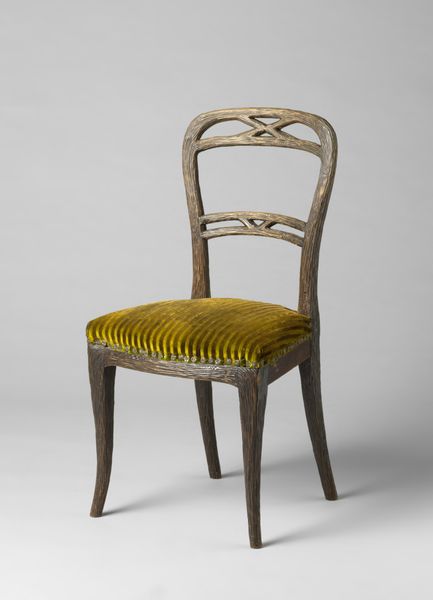
wood
#
neoclacissism
#
furniture
#
wood
#
decorative-art
Dimensions: 36 1/2 x 20 1/2 x 17 1/2 in. (92.71 x 52.07 x 44.45 cm)
Copyright: Public Domain
Editor: So this wooden chair, called a "Lyre-back Sheraton side chair," is from around 1800. What stands out is how delicate the design feels, especially that lyre shape in the back. It's quite different from furniture today! What do you see in this piece? Curator: Indeed! That lyre, a stringed musical instrument, acts as a potent symbol here. What does it evoke for you? Editor: Music, of course! And maybe a sense of refinement, or a connection to the arts. Curator: Precisely! In Neoclassical design, the lyre connects to ancient Greece and Rome. Music and poetry were vital parts of classical education and ideals. Notice how the chair back transposes the lyre into an open framework, simultaneously supporting your back while conjuring an active experience of "seeing" sound. This isn’t just a chair; it’s a statement about values and cultural aspirations. It also refers to harmony, order, and beauty that appealed to that period. Think about how the owner might have wanted to project themselves by owning such a symbolic piece. Editor: That's fascinating. It's amazing how much meaning can be packed into something seemingly simple like a chair. Curator: Objects like these tell stories beyond their function, whispering narratives of cultural memory and continuity. When we look, we are connecting across centuries. Editor: I'll definitely think about furniture differently now. Thanks for sharing this insightful context. Curator: And I in turn have been reminded how enduring symbols remain powerful across time and cultures.
Comments
No comments
Be the first to comment and join the conversation on the ultimate creative platform.
